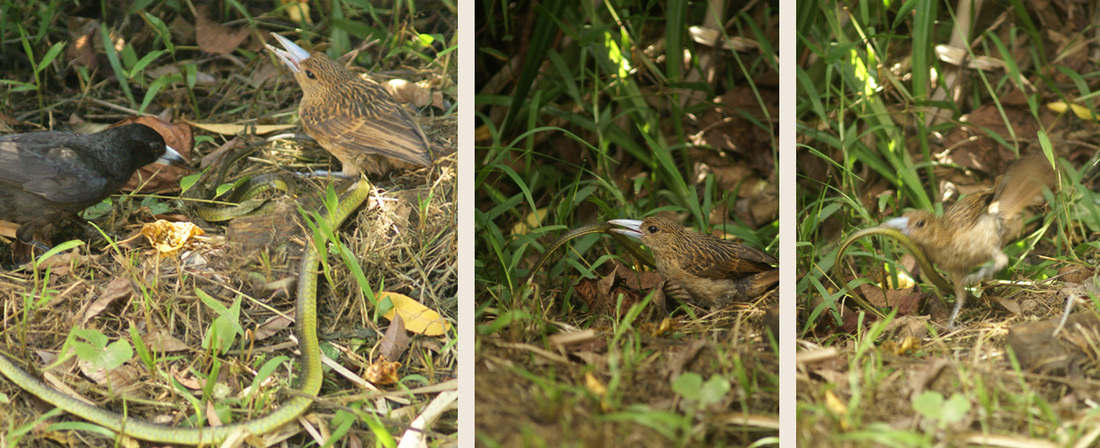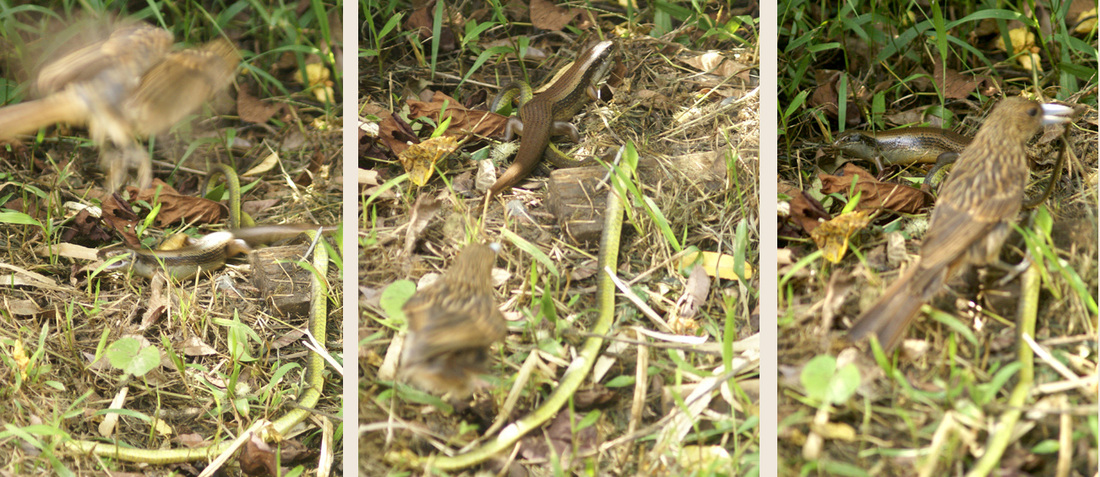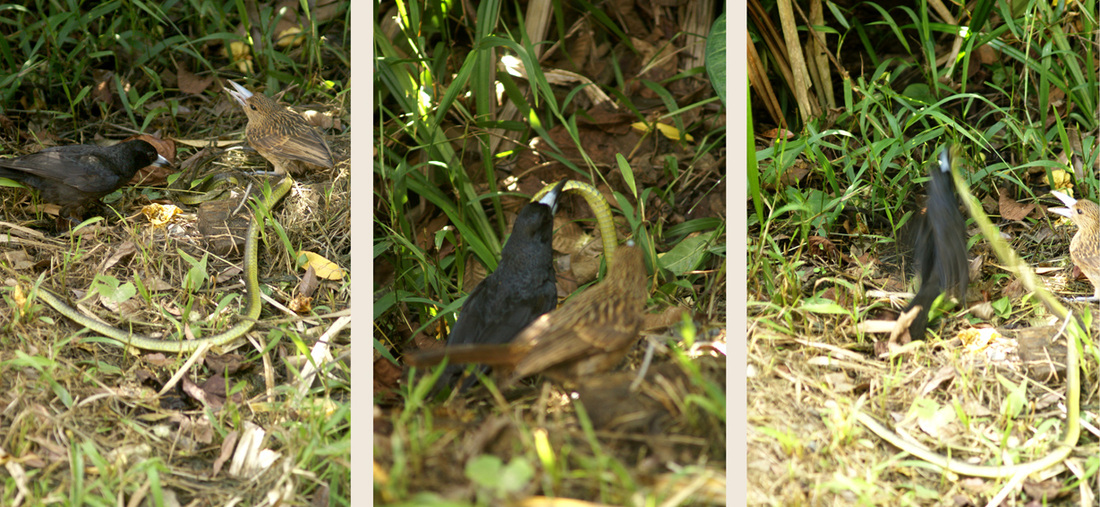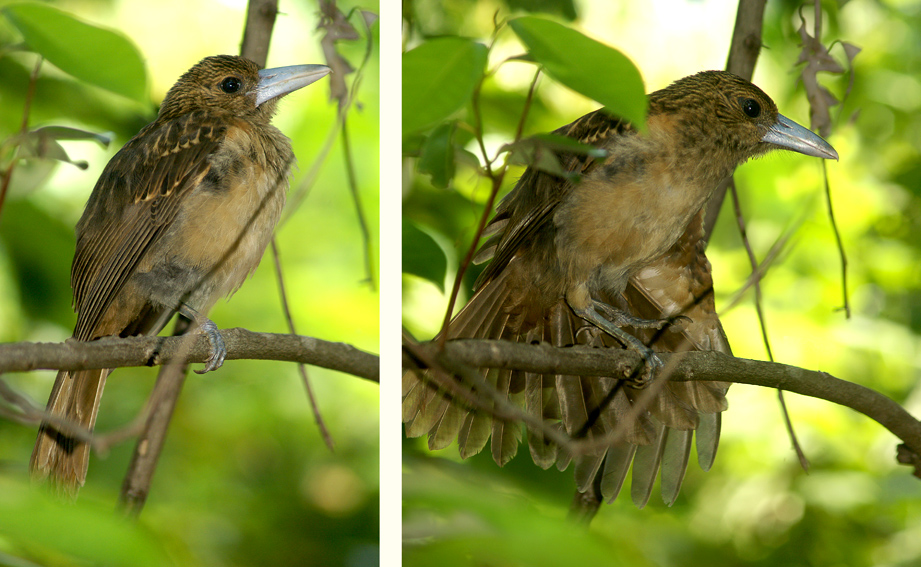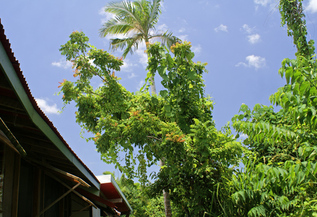
Scuffling noises on the roof, like there was something in the ceiling woke me up early in the morning a couple of days ago. It was accompanied by a loud ruckus of butcher bird calls and on closer inspection a family of black butcher birds had killed a reasonable sized green tree snake which was now laying motionless on the ground surrounded by the family, all 'talking' about it.
The snake must have been in the large sapling that has had an enormous growth spurt as part of the rejuvenation of the rainforest and is beginning to bend over the house under the weight of the vines proliferating since cyclone Yasi.
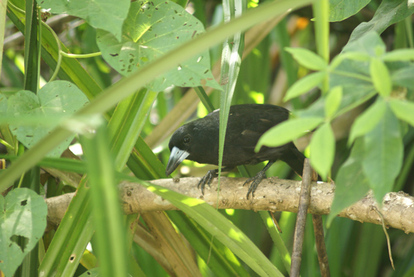
The butcher bird family consists of two adults and two juveniles.
The young juveniles were being overseen and coaxed to deal with this large newly acquired meal by the adult sitting on a branch above.
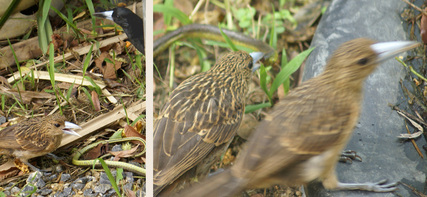
While the black butcher bird was observing from the branch above, it suddenly appeared to grab a leafy branch in it's beak and with an aggressive yank, ended up with a very large fat stick insect in it's beak. The two juveniles took their attention off the snake and with a chorus of screeching, followed the parent and fought over the tasty snack. The chick was soon back to battle with the larger meal.
Another half an hour went by as the young bird was learning the ropes before the adult finally flew down, swiftly gathered the snake in its beak and took it into the tangled cyclone altered rainforest.
Later in the day I took these photos just outside my studio of one of the juveniles dozing and stretching after a hard day of 'hunting and gathering'.
The natural environment is integral to our survival too so it is hard to understand why it is being ignored and so compromised in the major decision making process of what is considered world progress. We all need to stop for a moment and seriously contemplate how we live and how our lives impact on our homelands and the survival of our future generations. We all know the famous Cree prophecy "Only when the last tree is cut down................"
One of our strongest traditions is to each year resolve to make a change in our lives that will make a positive difference to our future.
I would like to be part of a world where the environment is considered before, or on an equal basis, as our community and economy and I resolve to be careful and mindful of anything I do that may impact on that precious environment, our heritage.
liz
